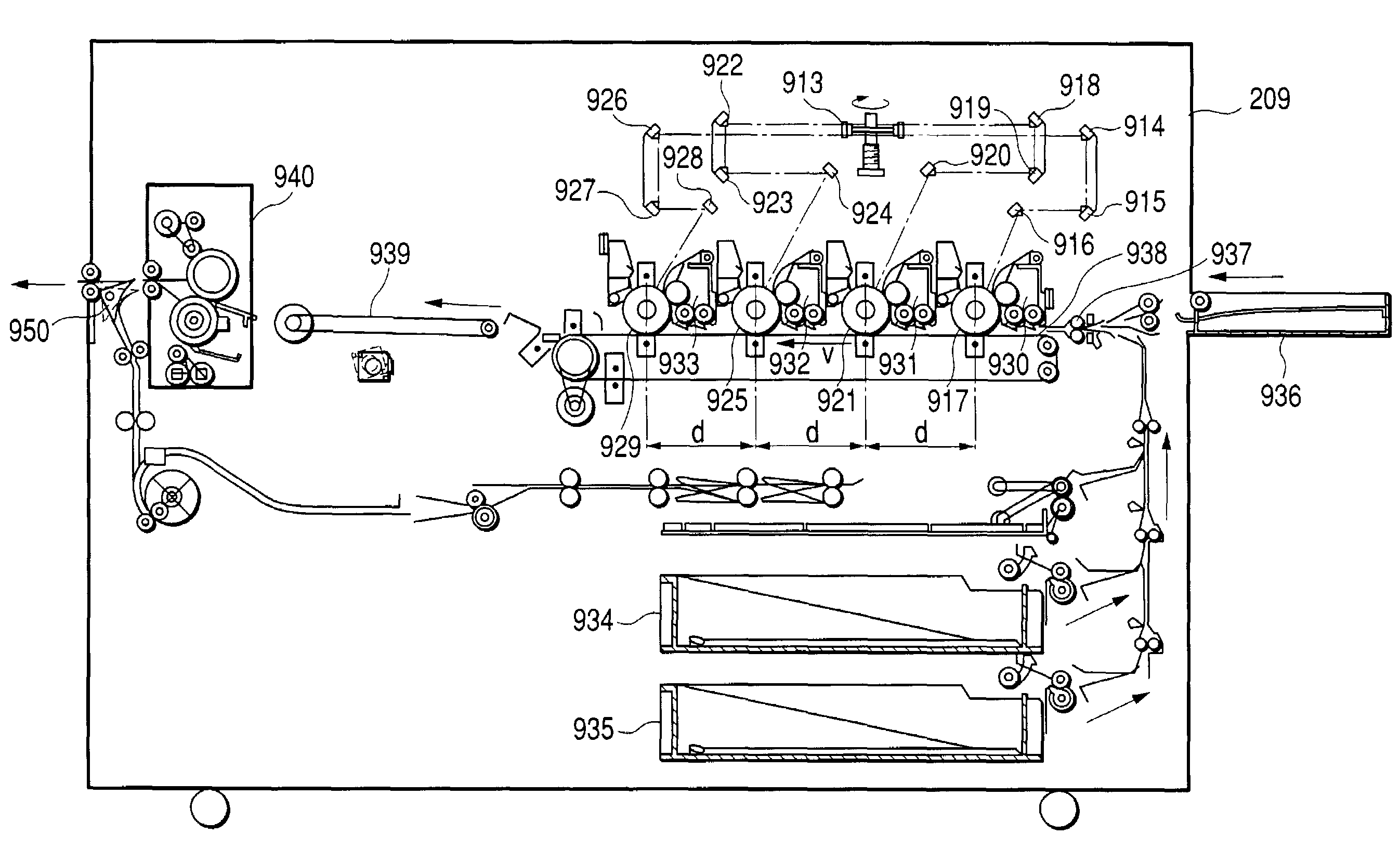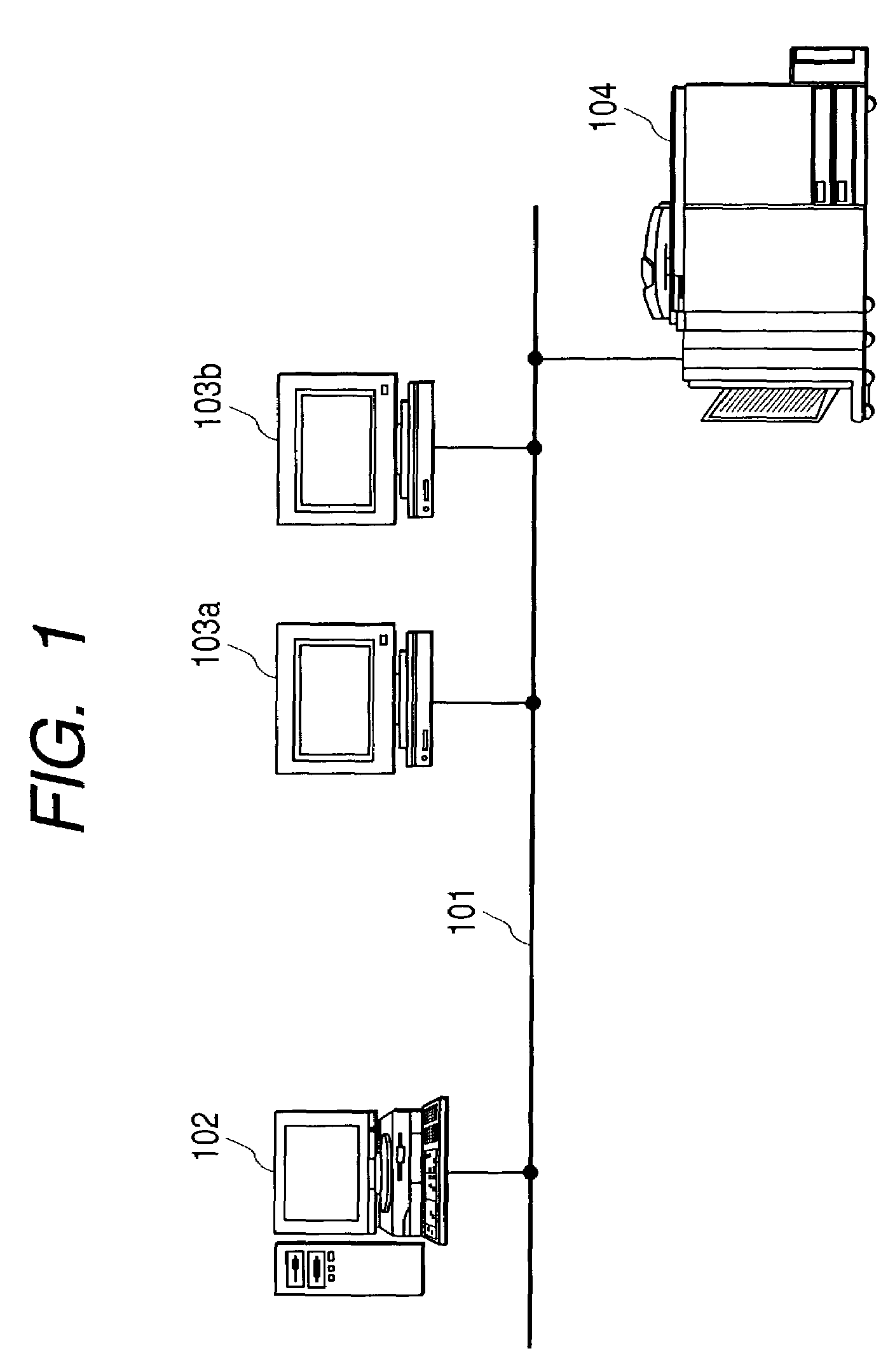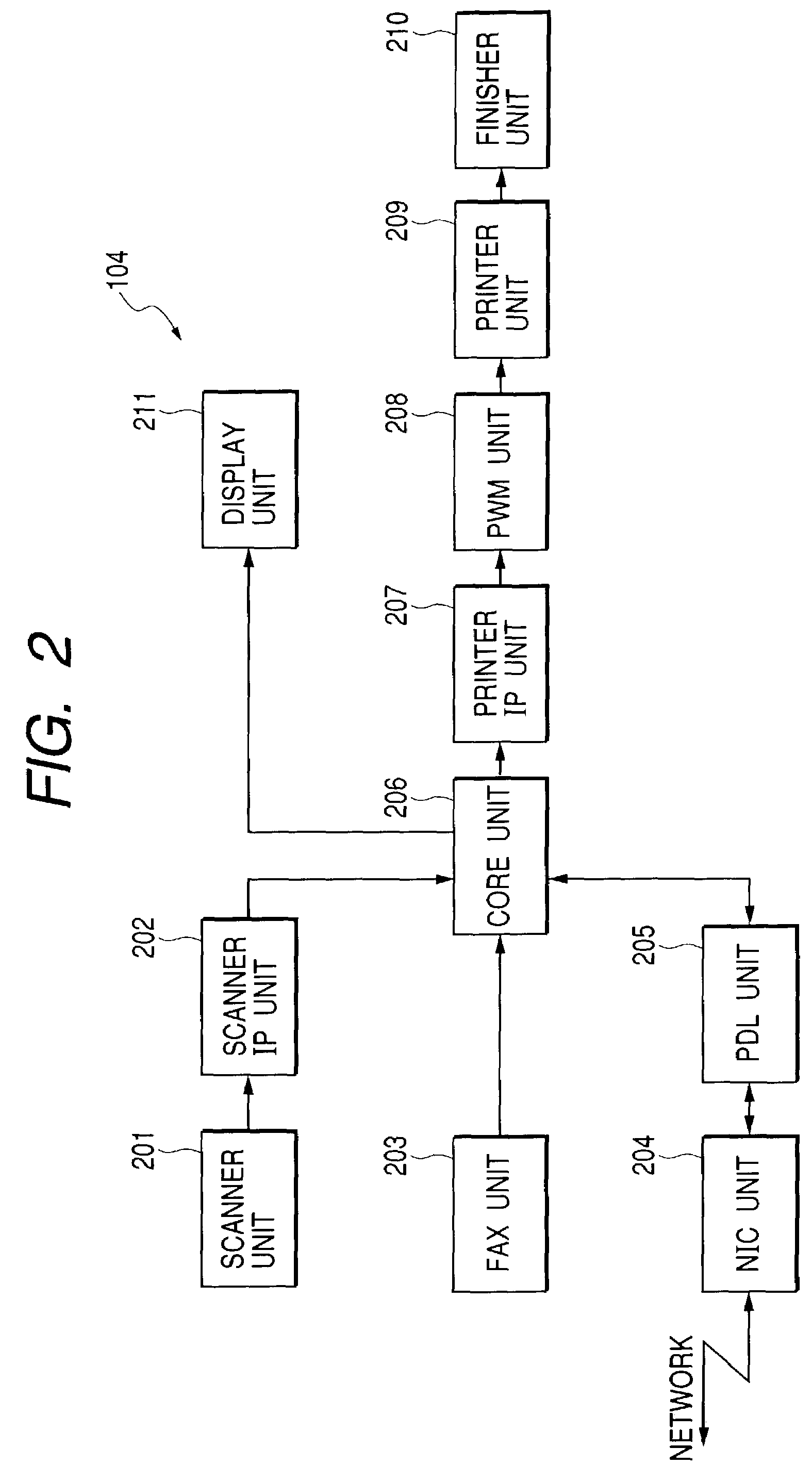Image forming apparatus having plural image supporting bodies
- Summary
- Abstract
- Description
- Claims
- Application Information
AI Technical Summary
Benefits of technology
Problems solved by technology
Method used
Image
Examples
first embodiment
(First Embodiment)
[0039]FIG. 1 is a block diagram showing an image forming system according to the first embodiment of the present invention. In FIG. 1, a computer 102 is a server which is connected to a network 101, and computers 103a and 103b are clients which are also connected to the network 101. Although it is not shown in FIG. 1, it should be noted that a lot of other clients are connected to the network 101, and all of these clients are representatively called a client 103 hereinafter.
[0040]Moreover, an MFP 104 which is a color-four-drum MFP capable of performing full-color image reading, full-color printing, facsimile transmission, facsimile reception and the like is connected to the network 101. Moreover, although it is not shown in FIG. 1, various other apparatuses such as another MFP, a scanner, a printer, a facsimile machine and the like are connected to the network 101.
[0041]Here, on the computer 103, application software for executing so-called DTP (Desktop Publishing)...
second embodiment
(Second Embodiment)
[0138]FIG. 18 is a timing chart showing changes of control signals of a drum delay unit 704 in its main scan direction, according to the second embodiment. It should be noted that output of 16-bit image data ram_data shown in FIG. 18 is different from that shown in FIG. 13.
[0139]Moreover, it should be noted that inputs of a sub-scan valid interval signal venb_in and four-bit image data data_in are the same as those shown in FIG. 13. The data are input for a main-scan valid interval (data_valid_p0) of the first page. In this interval, the data of 16 pixel clocks are temporarily stored as one block (data w0), and then the image data are collected into the block for every 16 clocks (data w1, data w2).
[0140]The temporarily stored image data w0, w1 and w2 are output as the data ram_data to an SDRAM 1205 in the interval of a main-scan valid interval signal henb_wr for the data writing, and the plural image data are stored in the SDRAM 1205. Here, as described above, the...
third embodiment
(Third Embodiment)
[0144]In the first and second embodiments, the data writing and the data reading to and from the memory are controlled by storing and administrating the length of the data in the main scan direction or in the sub scan direction. On one hand, memory writing and reading can be controlled also by beforehand setting an end address representing the end of the memory writing for each page. For example, in a case where the data writing and the data reading of the main scan interval to and from a memory is always set to the maximum values of the image size, the following control is performed.
[0145]FIG. 19 is a block diagram showing the internal structure of a drum delay unit 704 according to the third embodiment. In FIG. 19, numeral 1901 denotes a sync control unit which does not include a main-scan valid interval holding unit and a sub-scan valid interval holding unit as in the first embodiment. Numeral 1902 denotes a data conversion unit, and numeral 1903 denotes an addr...
PUM
 Login to View More
Login to View More Abstract
Description
Claims
Application Information
 Login to View More
Login to View More - R&D
- Intellectual Property
- Life Sciences
- Materials
- Tech Scout
- Unparalleled Data Quality
- Higher Quality Content
- 60% Fewer Hallucinations
Browse by: Latest US Patents, China's latest patents, Technical Efficacy Thesaurus, Application Domain, Technology Topic, Popular Technical Reports.
© 2025 PatSnap. All rights reserved.Legal|Privacy policy|Modern Slavery Act Transparency Statement|Sitemap|About US| Contact US: help@patsnap.com



